Bird Flu Busters – 5 Strategies for a Healthier Flock
This post may contain affiliate links. Read my full disclosure here.
We’ll share information on bird flu virus symptoms and transmission, plus five strategies for a healthier flock of backyard chickens.
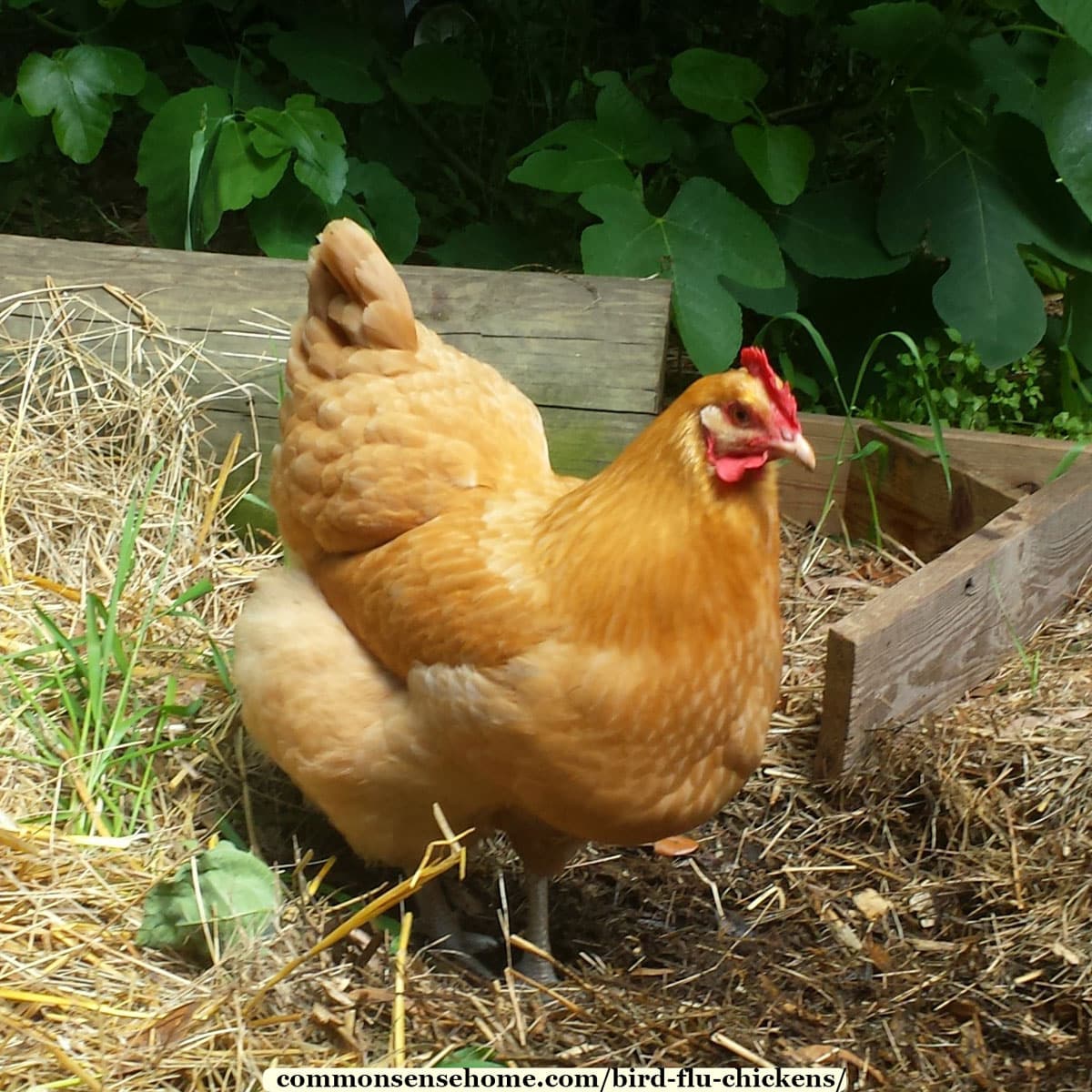
Bird flu continues to make headlines, with the CDC claiming that dairy cows and other animals are testing positive for H5N1 avian influenza. There are seven presumed human cases of bird flu as of July 13, 2024. Commercial flocks have been impacted in Minnesota, Colorado, and Iowa.
The H5N1 virus strain can infect humans, birds, and other animals. The first human U.S. case of H5N1 bird flu was reported in Colorado in April 2022. The infected person had been helping to dispose of infected birds. They had mild fatigue and have since recovered.
The disease normally infects people via extended contact with infected birds, not person to person. It is not a serious public health threat at this time, but may be a concern to poultry owners.
How Do Domestic Poultry Catch Bird Flu (Avian Influenza)?
The CDC (Center for Disease Control and Prevention) states that:
“Domesticated birds (chickens, turkeys, etc.) may become infected with avian influenza A viruses through direct contact with infected waterfowl or other infected poultry, or through contact with surfaces that have been contaminated with the viruses.”
“These viruses occur naturally among wild aquatic birds worldwide and can infect domestic poultry and other bird and animal species. Wild aquatic birds can be infected with avian influenza A viruses in their intestines and respiratory tract, but usually do not get sick.”
What are the Symptoms of Bird Flu (Avian Influenza)?
From the CDC:
Avian influenza A viruses are classified into the following two categories: low pathogenic avian influenza (LPAI) A viruses, and highly pathogenic avian influenza (HPAI) A viruses.
Infection of poultry with LPAI viruses may cause no disease or mild illness and may only cause mild signs (such as ruffled feathers and a drop in egg production) and may not be detected.
Infection of poultry with HPAI viruses can cause severe disease with high mortality. Both HPAI and LPAI viruses can spread easily through flocks of poultry.
HPAI virus infection in poultry can cause disease that affects multiple internal organs with mortality up to 90% to 100%, often within 48 hours. Some ducks can be infected without any signs of illness.
H5N1 is a type of highly pathogenic avian influenza (HPAI).
How Do I Keep My Chickens from Getting Bird Flu?
How can wild birds have bird flu and seem healthy, while domesticated poultry get sick or die?
The answer may lie in the difference between wild and farm-raised. In the wild, fowl feed on their natural diets with beneficial bacteria and microbes. They have fresh air and a healthy immune system that’s naturally resistant to bacteria and viruses.
In captivity, we raise most of our fowl in Confined Animal Feeding Operations (CAFOs). These are warehouse-style growing facilities where animals are crowded together by the thousands.
CAFO birds are fed mostly genetically modified grains, with little room to run or variety in their diets. Even pampered backyard flocks generally have a much more limited diet than their wild cousins.
There is no guaranteed way to prevent bird flu, but if you are a backyard chicken owner, the best way to protect your flock is to give them a healthy environment.
5 Strategies for a Healthier Flock
“An ounce of prevention is worth a pound of cure.” ~ Benjamin Franklin
#1 – Flock Inspection and Coop Maintenance
Watch your birds for signs of stress or poor health:
- Check for mites in your flock and their coop monthly and treat if needed.
- Vent inspection can reveal a sick or stressed bird.
- Comb inspection – look for red combs in good condition. Pale combs indicate poor health.
- Check the feet for scaly leg mites or bumblefoot, and treat if needed.
Learn more about how to inspect a chicken for good health.
Keep their coop and run in good condition:
- Keep the Coop and Roost Clean, and inspect for insects or pest problems.
- Use Herbs in the Coop to support respiratory health, repel insects and help keep the flock calm and relaxed.
- Ensure good ventilation, using a fan or windows to make sure chickens get plenty of fresh air.
#2 – Natural Diet
Chickens are omnivores, and do best on a mixed diet. If you are not able to let your chickens free-range to forage, make sure you offer grubs, meal worms, worms, or crickets to eat for protein. They also enjoy meat scraps cut into small bits.
Fresh produce and growing things are good to add to their food mix. High water produce like watermelon and cucumbers help keep them hydrated in high temps.
See “50 Do-It-Yourself Projects for Keeping Chickens” for more ideas for providing fresh food for your birds.
#3 – Reduce stress
Give chickens plenty of room, inside and out. Birds need about 2-3 square feet inside the coop and 8-10 feet inside a run.
Offer shelter from excessive temperatures. Cool your coop with a fan, shade, and air circulation in the heat of the summer. In extreme heat, try a small pool with shallow water for your flock to wade in.
Use deep wood shavings, straw bales, or other natural forms of insulation to keep them warm in the winter. Avoid cold drafts directly on the birds, but allow airflow.
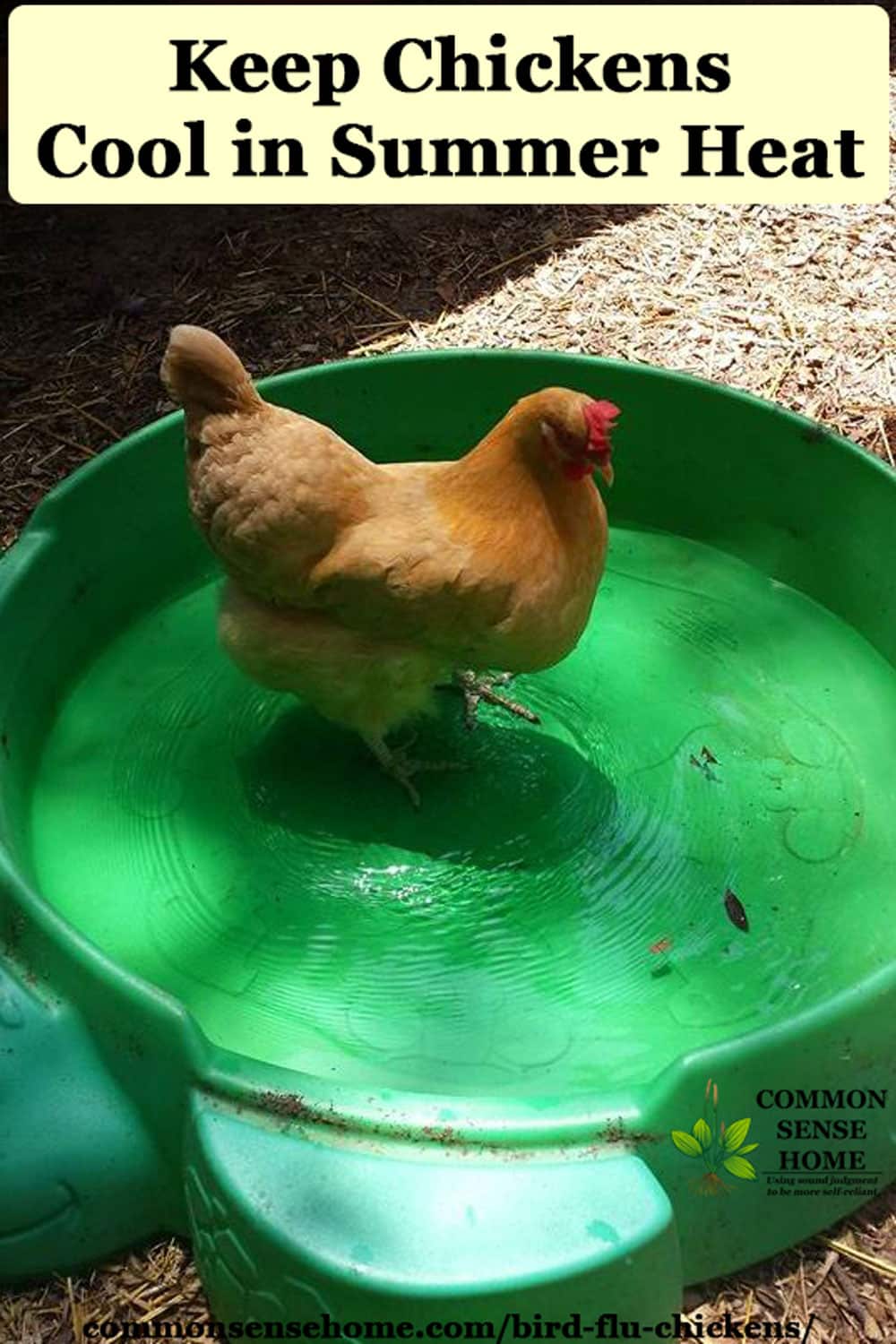
Forgo the lights in the coop to reduce stress. Adding lights in the coop adds stress to your flock by not allowing their bodies to take the rest they need during the winter months.
Remove aggressive roosters to keep the flock calmer. Aggressive roosters that are rough on your girls will do more harm than good.
Provide Predator Protection. If predators are in abundance in your area, consider letting birds out only for supervised foraging, and cover their free-range area with netting and or plant shade trees in which they can hide.
Free-Range When Appropriate. Chickens need to spread their wings and forage to get access to the widest array of foods and microbes. Plenty of fresh air and exercise is as good for them as it is for us.
#4 – Probiotics and Health Care
Include these items in your birds’ diet for a healthier flock.
- Probiotics – Just like every living creature, poultry need a healthy digestive system and probiotics help support that system.
- Food Grade Diatomaceous Earth – Diatomaceous Earth (DE) is a fine white powder made of the tiny fossilized remains of diatoms, a type of algae. Add 1 pound of DE to every 50 pounds of feed to help prevent intestinal worms. To help prevent external mites or lice, sprinkle some in the nest boxes, coop bedding, and especially in your chickens’ dust bathing area.
- Apple Cider Vinegar (ACV) and Garlic – My family takes apple cider vinegar and fresh garlic every day to prevent sickness, and so does my flock.
- Fermented Feed – People have been eating fermented food for thousands of years to support good health. Fermenting your chicken feed not only saves you money but also has added health benefits for your flock.
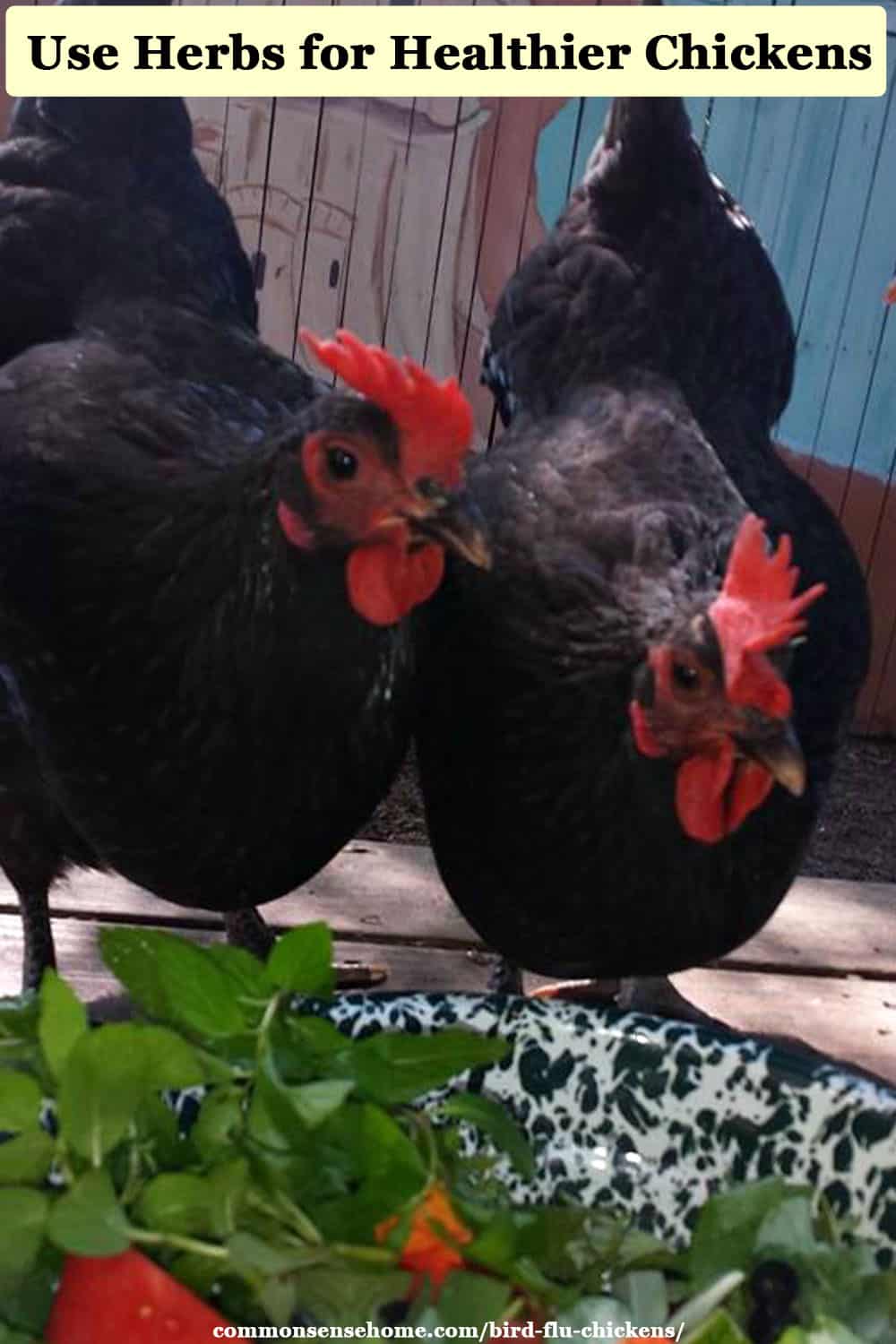
Would you like to save this?
#5 – Herbal Supplements
Herbs have natural antimicrobial, antibacterial, antiviral, antiseptic and antifungal properties. Herbs help support a healthy immune system, improving the odds of beating bird flu.
I feed herbs to my flock daily, along with other garden scraps. The flock gets a seasonal sample of what’s abundant in the garden.
Oregano, for instance, contains antibiotic properties which may help prevent avian flu, blackhead, coccidia, e-coli, infectious bronchitis and salmonella.
See a complete list of herbs that are good for chickens and their uses.
Help Prevent the Spread of Bird Flu
All bird owners, whether commercial producers or backyard enthusiasts, should practice good biosecurity. Prevent contact between your birds and wild birds when possible. Quarantine new additions to your flock for 1-2 weeks.
Report unusual sick birds or bird deaths to State/Federal officials, either through their state veterinarian or through USDA’s toll-free number at 1-866-536-7593.
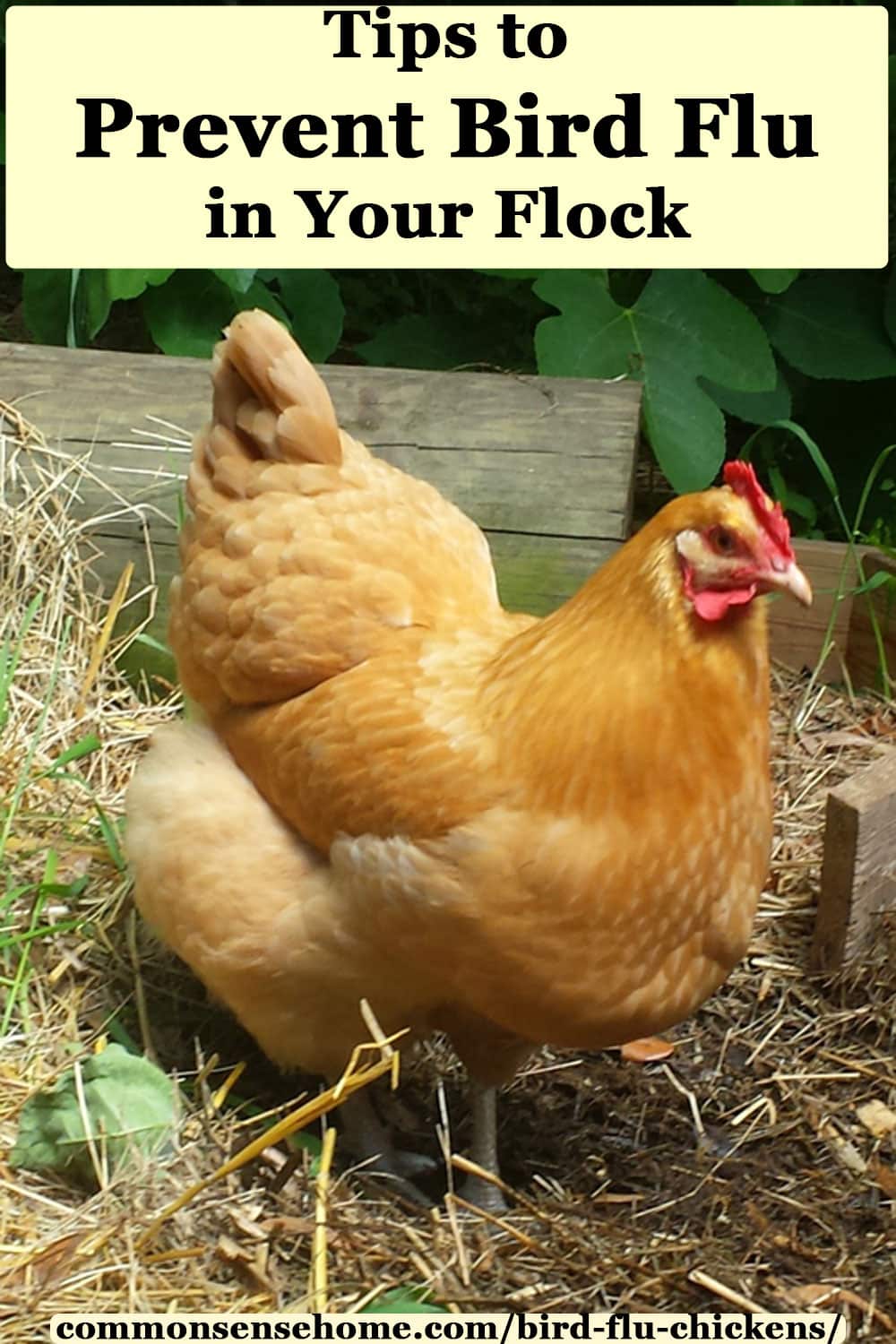
More Chicken Tips
- Homestead Chicken Resources
- Getting Started with Meat Chickens
- Top 7 Tips for First time Chicken Owners

This post is by Amber Bradshaw of My Homestead Life.
Amber and her family moved from their tiny homestead by the ocean in South Carolina to forty-six acres in the Smoky Mountains in East Tennessee.
Originally published in 2015, last updated in 2022.

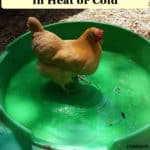
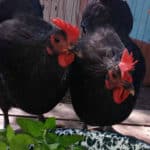
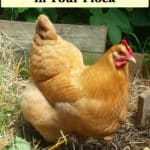
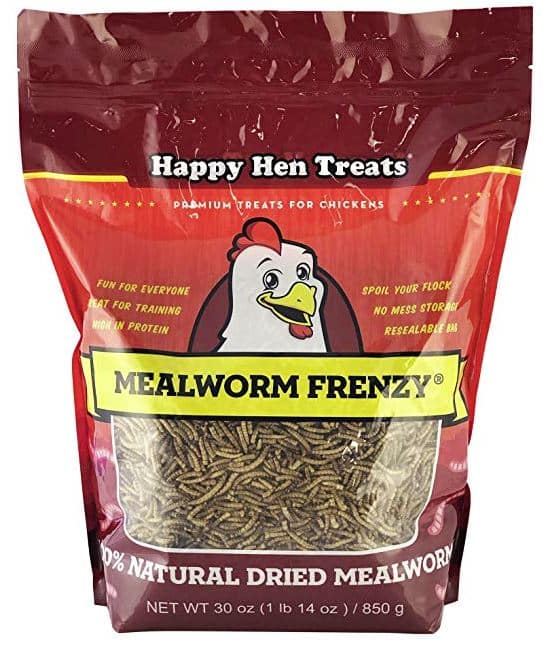
Excellent advice, especially in a year when weather is so unpredictable. My amazing chiropractor is a nutrition wizard and a homesteader. She recommends adding just lysine to chicken feed as a nutritional supplement;and giving the hens a partially burnt log that is predominantly charcoal or chunks of charcoal to protect the hens from parasites and to keep the microbes in their bedding in healthy balance. The hens peck off and bathe on the charcoal on a series of several logs each year, and when we run out of logs, on chunks of charcoal fished out of our wood stove ashes. They seem happy, if a little sooty, and remain quite perky throughout the year. We administer the dilute ACV, honey and garlic solution in stressful situations. My husband was a little incredulous that a hen would enjoy having a wading pool, and I particularly appreciate that photo in your article!
Just wanted to drop in an addition, avian influenza is grouped into two types, Low Pathenogenic and High Pathenogenic, that have to be determined by lab tests. High Path is the one that will wipe out entire flocks.
How do you give your chickens ACV and garlic and how much? Will they just eat it if you put it out?
We add a little ACV in their water, and mix a little powdered or chopped garlic in their feed.
Greatly informative post. I agree with everything here and am doing my best to keep my flock as healthy as possible to allow them to hopefully battle not only avian flu strains but other pathogens that come their way.
Lisa
Fresh Eggs Daily
Thanks, Lisa. Your good opinion means a lot. You have so much good information on your site and in your book(s). (I saw the ducks are on the way. 🙂 ) Your instagram feed reminds me of being back on the farm when I was growing up. Mom used to raise huge flocks of chickens, ducks and geese, for us and for sale.